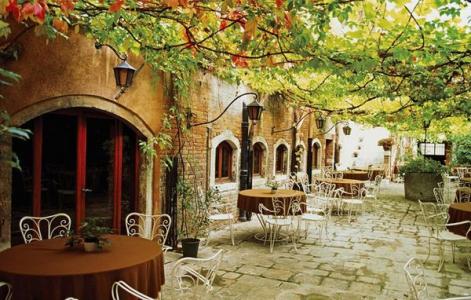Five factors to evaluate the flavor of espresso
Five factors of espresso flavor
Italian coffee is different because it is given a specific meaning when it is formed. Italians like coffee after work, but in order to save time, they need a simple and strong cup of coffee, so they have its representative drink Espresso, which means espresso.
It is understood that this Italian coffee is not only fragrant and mellow, but also simple to do, as long as the boiling water, using steam pressure to force hot water through the very fine and squeezed coffee powder, extract the most intense taste of coffee, and then drip into the following cup, brewing can not extract too much, so the coffee machine must be able to very quickly shut down, when the coffee machine drips out with golden coffee, this is Espresso. Because it is concentrated, it is generally used in small cups, and this coffee is also used as a base for fancy coffee.
First step: smell.
Experience the aroma of coffee;
Second step, color.
To make the right coffee, there should be a layer of golden crema, or coffee oil, not too thick or too thin, with dark brown coffee underneath. Look at the good coffee "crema" all refreshing.
Step 3: Taste
Espresso, or espresso, is a type of coffee that is brewed with extremely hot, but not boiling, water by high pressure over ground coffee powder. It was invented and developed in Italy in the early 20th century, but until the mid-1940s it was a drink made solely through steam pressure. He invented and commercialized the spring piston lever coffee machine, transforming espresso into the beverage we know today. The pressure used in the production process is usually 9 to 10 atmospheres or bar pressure. Espresso coffee has a thicker texture than drip coffee, and contains more dissolved matter per unit volume than drip coffee; usually the supply is calculated in "shots." Espresso is chemically complex and volatile, with many components breaking down due to oxidation or temperature drop. One characteristic of properly brewed espresso is the presence of crema, a reddish brown foam that floats on the surface of the espresso. It consists of vegetable oil, protein and carbohydrates. Coffee cream has a combination of two elements, emulsion and foam colloid. Through the short time and high pressure brewing process, the unique flavor of a cup of coffee is concentrated and expressed stronger than other brewing equipment. However, due to the short quenching time, the caffeine content is relatively small. Espresso is often used as the basis for coffee drinks that are blended with other ingredients (such as milk or cocoa powder), such as lattes, cappuccinos, macchiato, and mocha coffee, without over-diluting the coffee ingredients.

Important Notice :
前街咖啡 FrontStreet Coffee has moved to new addredd:
FrontStreet Coffee Address: 315,Donghua East Road,GuangZhou
Tel:020 38364473
- Prev

There is no need to put capsules when cleaning the capsule coffee machine, right?
There is no need to put capsules when cleaning the capsule coffee machine. First of all, the capsule machine must be suitable for household use. Of course it's good to give yourself a drink. 2. The advantages of full automata: convenience (as long as you put beans or powder on the machine). But: it is precisely because of his convenience, there are his fatal shortcomings. After the coffee beans or coffee powder are unpacked, the shelf life is only 3 days.
- Next

Five factors of Italian espresso flavor
Five factors of espresso flavor 1. Dark chocolate, which is a perfect match for kung fu coffee, is a classic match in many cafes. two。 Listening to Chopin Mazuka and drinking this kind of espresso is not suitable for listening to more lively pop music. A quiet piano is very harmonious. Double espresso double espresso basically, this is a kind of
Related
- What is the Philharmonic pressure? How to use Philharmonic pressure to make delicious coffee
- Why does a hand grinder have more fine powder than an electric grinder?
- In addition to the hot mom, what is the difference between the versions of EK43 | ditting and Mahdi ek43?
- What kind of equipment do you need to make coffee by hand? Introduction to novice starter cooking equipment tools
- Espresso needs to be ground how thick and thin scale entry Italian Coffee Machine Bean Grinder investigation and Grinding course
- How much does it cost to open a small private cafe? How much does it cost to learn coffee? How to operate it?
- The difference between the flavor characteristics of hand-brewed coffee and coffee maker is hand-brewed coffee really better than coffee maker? Can I use a coffee machine to make coffee beans by hand?
- The difference between 01 and 02 of hario v60 filter cup what is the difference between 01 and 02 filter cup opening and cooking flavor
- What's the difference between the smart cup and the French kettle? Which is better, the French kettle or the Smart Cup?
- What's the difference between a smart cup and a V60 filter cup? The difference between the taste of smart cup and hand-brewed coffee

